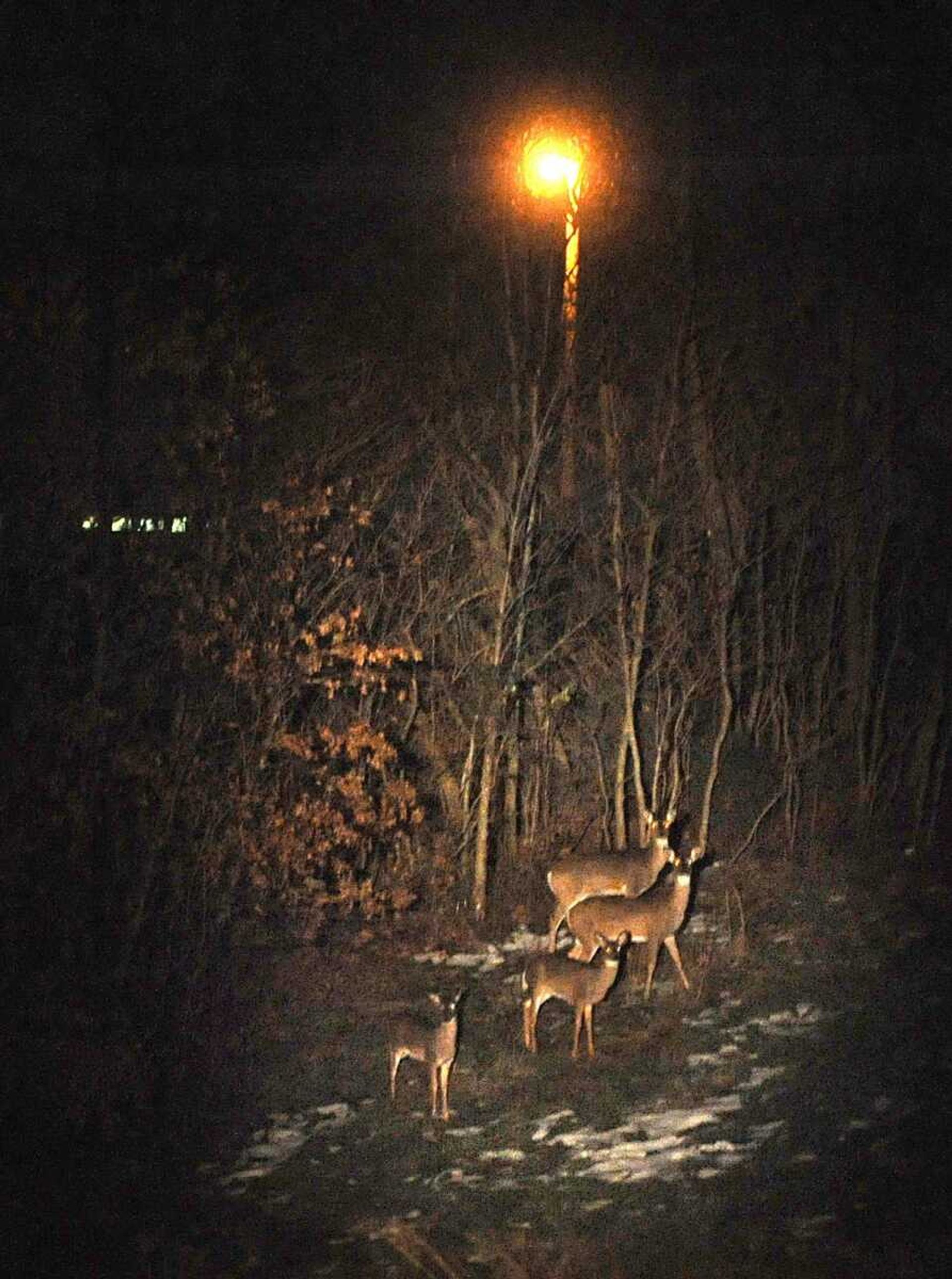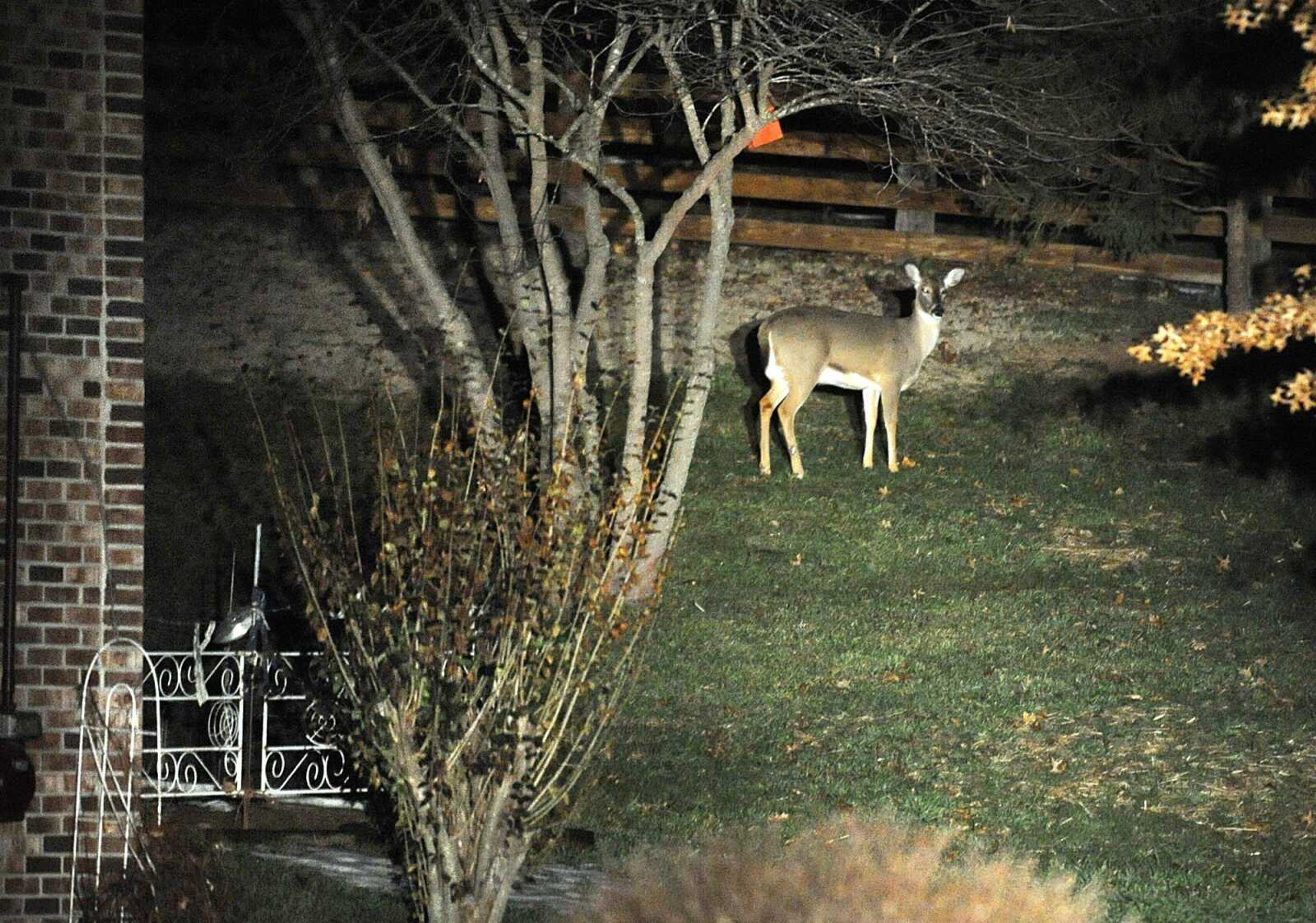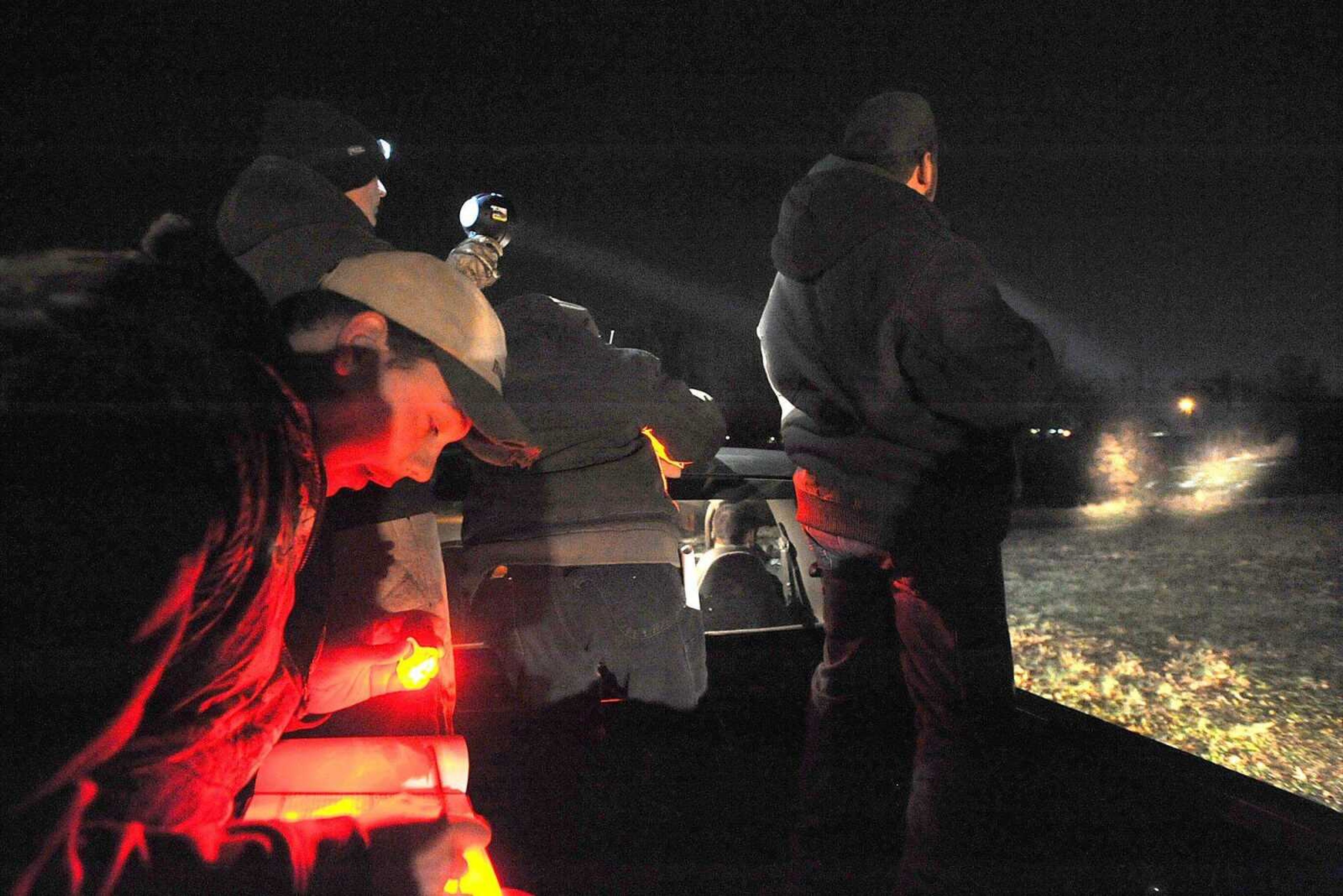Matt Bowyer, a wildlife biologist with the Missouri Department of Conservation, taps his hand quickly on the roof of the pickup's cab, signaling the driver to slow down. A beam from a handheld spotlight swoops to the right.
"Stop," Bowyer said. "There's three in that woodlot. See the eyeballs?"
As is turns out, there are four of the animals Bowyer and his team are looking for -- three does and a fawn. A rangefinder tool is used to help calculate the distance between the truck and the deer. Cody Roberts, a biology graduate student from Southeast Missouri State University, records the data.
The caravan of three trucks moves on, making its way slowly through a neighborhood between Mount Auburn Road and Interstate 55. In the first mile of the 14-mile survey, 20 deer are seen, including a group of seven bucks and eight doe in a pasture.
The six-man team, consisting of Bowyer, Roberts, Bollinger County conservation agent Jeff Scott, Cape Girardeau Police Department nuisance abatement officer Ty Metzger, natural history biologist Bob Gillespie and a resource forester from Perry County, are one of two teams surveying Cape Girardeau for whitetail deer Tuesday night.

They follow the same route on the west side of town used twice before. Scott drives as Metzger rides in the passenger seat of the cab. Metzger is along to help the conservation department with any inquiries from residents as the team spends several hours shining spotlights into the yards of homes and along the edges of parking lots. The rest of the team rides in the bed of the pickup.
Russell Duckworth, the conservation department's district supervisor follows behind in a truck equipped with emergency lights to help manage encounters with drivers who need to get around the survey team. The lead truck rolls along at between five and 10 miles per hour. The other team, with a similar makeup, surveys a route on the east side of the city.
Three more deer are spotted during the next hour as the team makes its way along streets with closely-grouped homes. For the most part, deer are seen in habitats in which one would expect to see them -- in open fields or on the edges of large wooded parcels.
Year of debate
The conservation department's survey is the first of its kind in the city, and follows more than a year of debate between supporters and opponents of urban deer hunting as a means to manage the deer population.

On April 2, Cape Girardeau voters will head to the polls to decide whether the city should repeal an ordinance that would allow bow hunting for deer within city limits. In July, the city council narrowly passed the ordinance, which would allow hunting, but the ordinance was suspended after a group of citizens gathered enough petition signatures to create the city's first-ever referendum. In October, the council did not repeal the ordinance as mandated by the referendum, which placed the issue before voters.
The conservation department volunteered to the conduct the survey. The department's intention, according Bowyer, is to inform the public of the city's approximate whitetail deer density. The Biology Department at Southeast Missouri State University is assisting by analyzing the data. Results of the survey, which Bowyer said should provide several key pieces of information to help the department manage the area deer population, should be available in March.
"One thing that we know we should get from this is a determination of social carrying capacity," Bowyer said. "The survey results will tell us if there is an issue with that, since between 20 and 40 deer per square mile can be detrimental in a populated area."
The conservation department established its route with the help of the police department in order to avoid surveying too many areas where deer are known to frequent based on reports to officers. The survey area was predetermined by measurement with lights and rangefinders before any deer were counted -- put simply, Bowyer said, a team with a truck stopped every 10 feet along the route and measured how far from the truck a deer could be spotted using a light. The team then counts the deer seen within that area when conducting the survey.
Mayor Harry Rediger has said the city's action in requesting the department perform the survey is to give the public an idea of the number of deer that live within city limits before they head to the polls. To Bowyer and the department, the survey is a way wildlife managers can get a baseline estimate and establish a protocol for future surveys.
Keep Cape Safe, the citizen group that gathered referendum petition signatures, will soon begin discussing strategies to encourage voters to participate in the April election, coordinator Stephen Stigers said. The group opposes urban hunting because it believes it is unsafe and that there are alternative ways to manage the city's deer population.
Stigers questions whether the survey methods can be accurately attached to the deer issue, since some already perceive deer as a problem. He said he believes aerial surveys are more accurate than drive-by surveys. Gillespie said aerial surveys are a good way to conduct a count, but aren't feasible in an urban setting.
Keep Cape Safe will meet at 6:30 p.m. Jan. 31 in the Hirsch Community Room at the Cape Girardeau Public Library. The meeting is open to the public. Stigers said the group will discuss the upcoming election, the wording of the city's ballot question and the survey, and how it may influence voters.
The ballot question, as currently worded, asks voters if the city should repeal the ordinance. If in favor of repealing the ordinance, which means urban hunting would not be allowed, a voter would check the "yes" box. If a voter wanted urban deer hunting to be allowed per city ordinance, they would check the "no" box.
eragan@semissourian.com
388-3627
Pertinent address:
2302 County Park Drive, Cape Girardeau, MO
401 Independence St., Cape Girardeau, MO
711 N. Clark St., Cape Girardeau, MO
Connect with the Southeast Missourian Newsroom:
For corrections to this story or other insights for the editor, click here. To submit a letter to the editor, click here. To learn about the Southeast Missourian’s AI Policy, click here.







